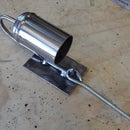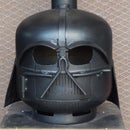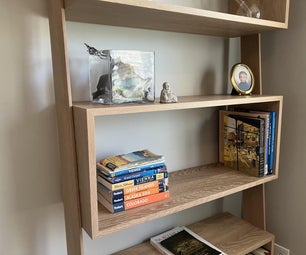Introduction: Bacon Powered Lamp
Have you ever wondered what you would do for light in an emergency situation where you have no electricity or candles, but you do have a plentiful supply of bacon?
Of course you have! But wonder no more, I have the perfect solution.
In this instructable I will show you how to create your own Bacon Lamp , using materials that should cost nothing and are usually discarded.
Step 1: Assemble Your Materials
Here's what you'll need:
- Bacon fat; about 1/4 cup.
- A stick, about 3-4mm thick; I used a basil stem. I thought it would smell nice but actually it didn't make any difference. Any non-poisonous stick will do.
- A small tin can. I used an empty baked beans can.
- A strip of cotton fabric. About 1/2" (15mm) wide and 6" (150mm) long.
- Some sand.
- A stove and a pan to melt the fat in.
Step 2: Create Your Fuel
This lamp uses bacon fat for fuel. I guess you will need about a quarter of a cup of fat.
To obtain bacon fat...
You can simply collect the fat left in the pan after frying your breakfast bacon until you have enough,
or
you can do what I did and trim the excess fat off some raw bacon and fry it on the stove until all the fat turns liquid. This is a very simple process, but be careful not to burn the fat or yourself. Everything gets very hot.
Step 3: Assemble Your New Lamp
Cut your stick to about the same length as your tin can is tall.
Wrap the cotton fabric around the stick like a bandage.
Fill your small tin can with sand until it is about 2/3 full. This supports the wick and reduces the amount of fat you need.
Stick the wrapped stick into the sand. This will be the wick of the lamp.
Pour the bacon fat over the wick and onto the sand. The fat will soak into the sand a bit.
At this point I realized my wick was too long so I trimmed it with some pliers.
Step 4: Light Your Lamp
Now is the fun part.
Light the lamp as you would a candle. It may take a little while to start the first time, but you will soon see the flame grow.
At this point you might like to do some fine tuning.
- Shorten the wick to reduce the size of the flame. This will also make it burn less fuel too of course.
- Adjust the tightness of the wrap. The tighter the wrap the less fuel will soak into it and so the flame will be smaller. A loose wrap will produce a bigger flame.
- Use trial and error to get the best result. You don't want a big flame spreading soot all over the place. A small flame should burn quite cleanly and throw a nice light.
I hope you have enjoyed my second ever Instructable. If you did, please consider giving it your vote in the bacon contest.

Runner Up in the
Bacon Challenge

Participated in the
MakerBot Challenge













